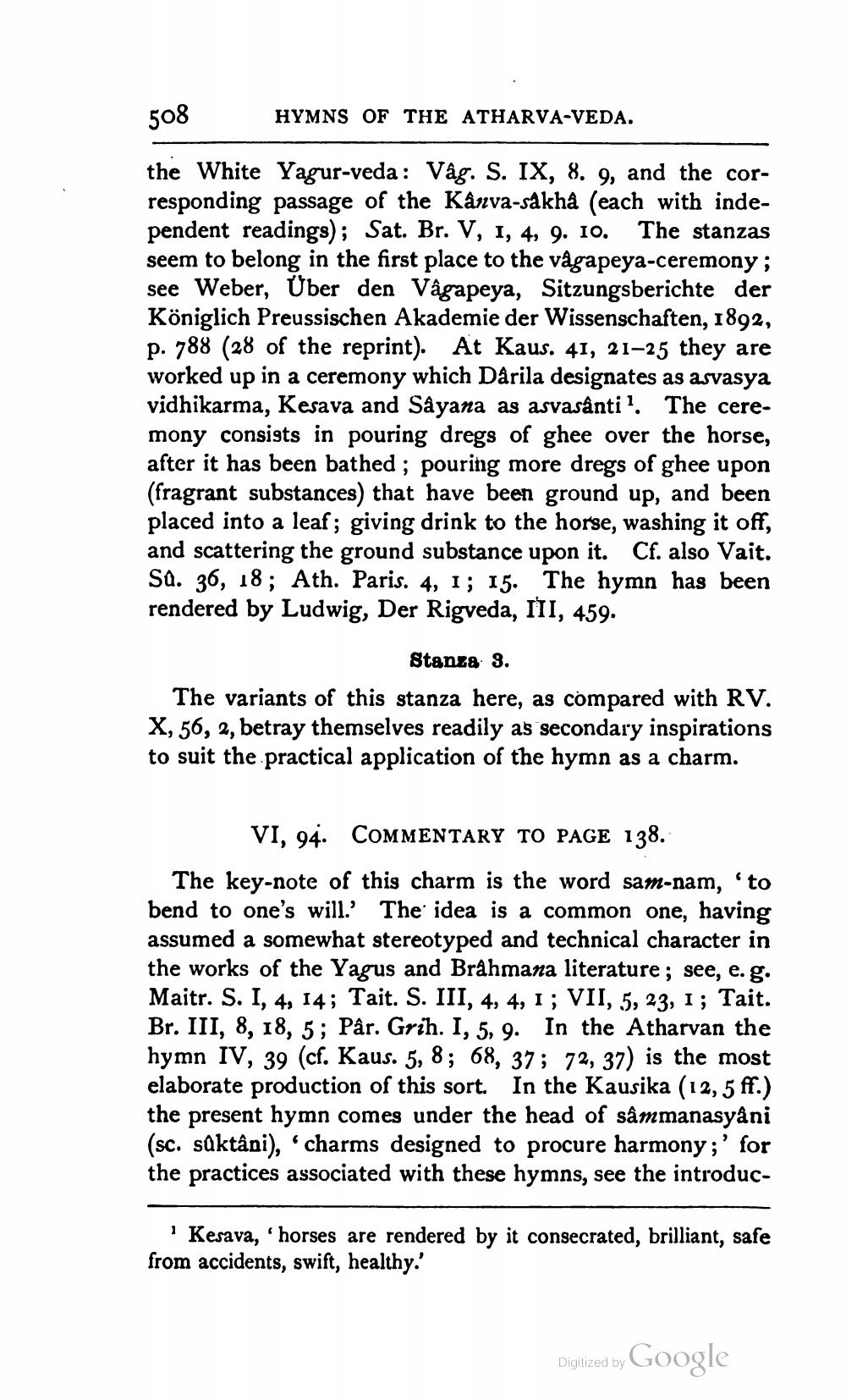________________
508
HYMNS OF THE ATHARVA-VEDA.
the White Yagur-veda: Vág. S. IX, 8. 9, and the corresponding passage of the Kanva-sakhà (each with independent readings); Sat. Br. V, 1, 4, 9. 10. The stanzas seem to belong in the first place to the vagapeya-ceremony; see Weber, Über den Vâgapeya, Sitzungsberichte der Königlich Preussischen Akademie der Wissenschaften, 1892, p. 788 (28 of the reprint). At Kaus. 41, 21-25 they are worked up in a ceremony which Därila designates as asvasya vidhikarma, Kesava and Sayana as asvasânti?. The ceremony consists in pouring dregs of ghee over the horse, after it has been bathed ; pouring more dregs of ghee upon (fragrant substances) that have been ground up, and been placed into a leaf; giving drink to the horse, washing it off, and scattering the ground substance upon it. Cf. also Vait. Sa. 36, 18; Ath. Paris. 4, 1; 15. The hymn has been rendered by Ludwig, Der Rigveda, III, 459.
Stanza 3. The variants of this stanza here, as compared with RV. X, 56, 2, betray themselves readily as secondary inspirations to suit the practical application of the hymn as a charm.
VI, 94. COMMENTARY TO PAGE 138. The key-note of this charm is the word sam-nam, 'to bend to one's will.' The idea is a common one, having assumed a somewhat stereotyped and technical character in the works of the Yagus and Brahmana literature; see, e.g. Maitr. S. I, 4, 14; Tait. S. III, 4, 4, 1; VII, 5, 23, 1; Tait. Br. III, 8, 18, 5; Pâr. Grih. I, 5, 9. In the Atharvan the hymn IV, 39 (cf. Kaus. 5, 8; 68, 37; 72, 37) is the most elaborate production of this sort. In the Kausika (12,5 ff.) the present hymn comes under the head of sâmmanasyäni (sc. saktâni), charms designed to procure harmony;' for the practices associated with these hymns, see the introduc
Kesava, 'horses are rendered by it consecrated, brilliant, safe from accidents, swift, healthy.'
Digized by Google




